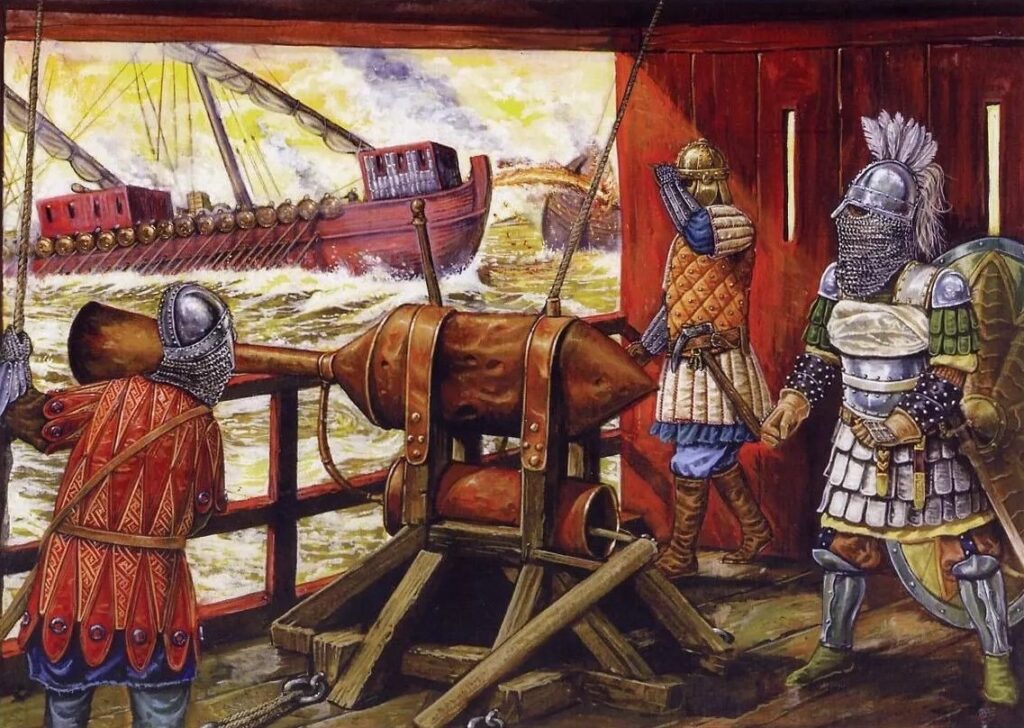In the 7th century, the Byzantine Empire grappled with constant attacks on its borders, prompting a reassessment of defense strategies. A crucial aspect of this involved refining war techniques and weaponry.Amidst heightened vulnerability on the eastern border to aggressive Arab incursions, a unique weapon emerged – the mysterious Greek fire.
The true originator of Greek fire is disputed, with Theophanes the Confessor attributing its invention to a Syrian architect named Callinicus. Callinicus introduced the “recipe” for Greek fire to Constantinople in 673/674 during a period of imminent danger from Arab attacks.
Greek fire played a decisive role in repelling the Arabs, leaving a lasting impact on various conflicts. Additionally, Theophanes vividly describes its devastating effects, with everything – ships, equipment, and people – succumbing swiftly to its incendiary prowess. The fear it instilled among adversaries stemmed from its resistance to water and the formidable challenge of devising effective countermeasures. Notably, some defenses included covering ships with soaked leather or maintaining a safe distance from the relentless flames.

Despite its historical significance, the exact composition of Greek fire remains elusive. While speculation points to saltpeter as a crucial component, the precise formula is shrouded in mystery. However the deployment of this formidable weapon underscores the Byzantine Empire’s commitment to innovation in the face of external threats, showcasing the strategic adaptation crucial for survival in a turbulent epoch.
SUPPORT
You like our content? Consider following us on our social media platforms here for more updates on our content!
